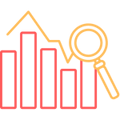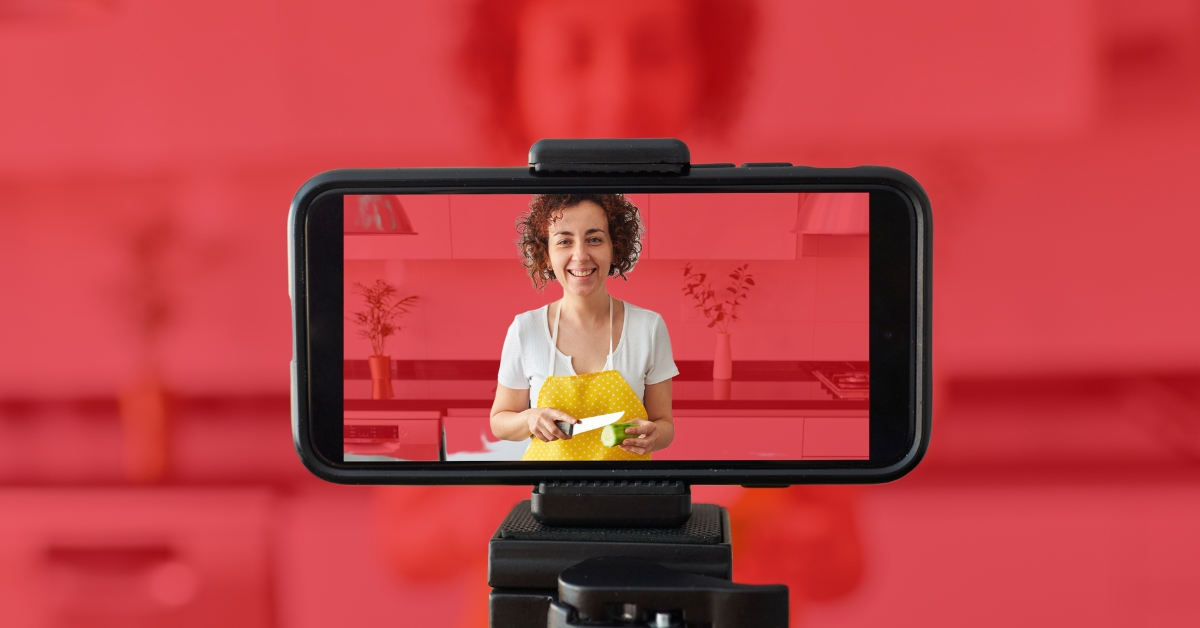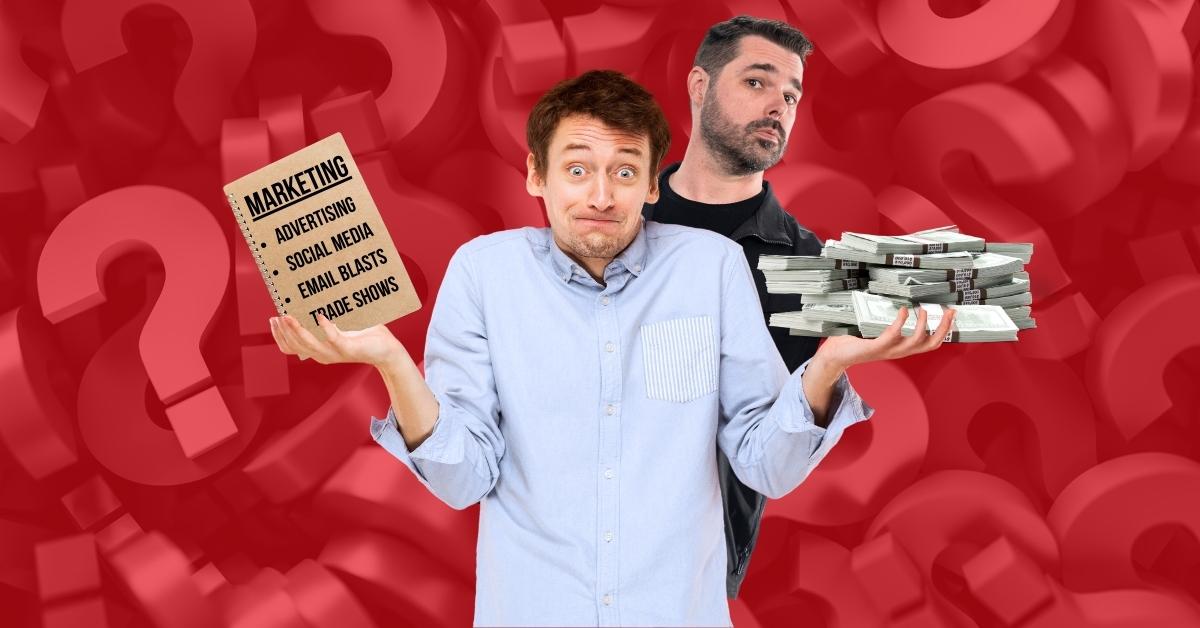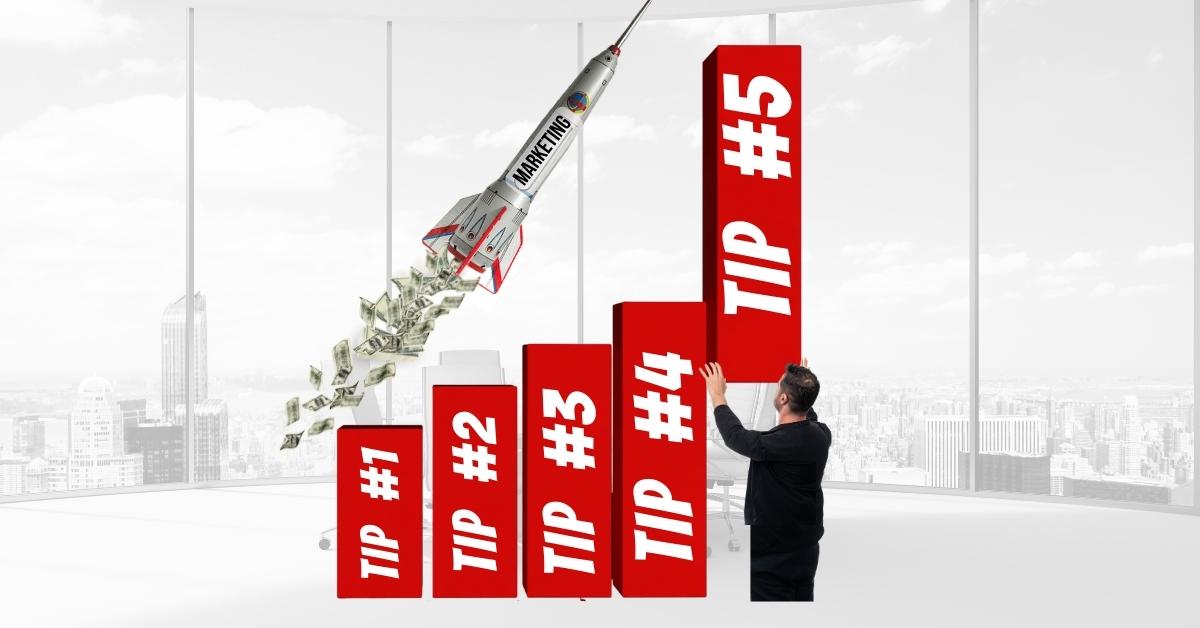Content Marketing: 6 Steps To Help You Get Started
Ask any successful marketer and they’ll tell you that content marketing is essential to creating a marketing strategy in 2022.
.jpg?width=1200&height=628&name=Blog%20Featured%20Images%20(6).jpg)
If you use any sort of marketing strategy, you're checking the data that comes along with it, right?

Maybe not... because according to a survey done by invesp, 87% of marketers say data is their companies' most underutilized asset out there.
Data is the one way for you to truly see if your marketing efforts are working in your favor or against you. Without being able to see the metrics of how much money you’re spending compared to how many leads you're getting, you won’t know if you’re throwing money at something that could be hurting your brand.
Companies that use data-driven strategies drive up to eight times as much Return on Investment (ROI) as those that don't.
That's a big amount when you're talking numbers!

You can be focused on data-driven marketing strategies while also focusing on the content you're posting. You just have to divide your strategies into paid and organic media content.
Using money to target your ads toward your specific audience is known as paid media. This type of media helps you gain more reach, engagement, and conversion from prospect to customer.
When you post content for brand awareness and to gain higher traffic to your website over time, you're likely posting organic content. This content is created and owned by you and is typically made with a longer-term strategy in mind.

It’s important to note that organic media can turn into paid media when you choose to put money behind it. For example, boosting a post on social media.
I know this might sound confusing but don’t worry, as long as you’re tracking everything in the right way you’ll be able to know if your marketing strategy is working.
Once you start to see that data and metrics will save you money, time, and effort, you’ll never go back to posting or running campaigns without looking at the whole picture.
Let’s dive a little deeper.
Advertising if you will.
.png?width=157&name=Untitled%20design%20(66).png)
Here are some examples of paid media:
This type of media has such high importance when it comes to having a successful digital marketing campaign because it reaches your target audience on third-party platforms where they naturally spend their time. Therefore, they’re seeing your content without going out of their way or thinking too much about it. It's a great way to naturally stay top of mind and be seen as a problem solver to problems they may have not known they had or will have in the future.
With paid media you will:
As a business owner, you may be reluctant to spend money on your content. However, if you're tracking it and using the data that comes from it, it won't be as scary!
Just know that you’re not alone. Businesses are expected to spend $571.16 billion on paid media in 2022 and all of these companies are looking to get a good return on their investment.
So how do you know if you’re getting a good return?
You can do this with the equation:
ROI(%) = [(Revenue Return - Marketing Spend) / Marketing Spend] x 100
.png?width=87&name=Untitled%20design%20(67).png)
If the number equated is positive, great! You're on the right path and can maybe think about putting more money in to see a higher ROI.
%20copy.png?width=78&name=Untitled%20design%20(67)%20copy.png)
If the number equated is negative, you may need to adjust the way you're strategizing. You can do that by reevaluating your content and using the feedback from the data collected to ensure you’re making the right decisions when it comes to your marketing.
How To Know If You’re Ready For A Paid Media Campaign:
There are common misconceptions about starting a paid media campaign. If you’re a new business there are some steps you want to take before jumping into throwing money at content.
You want to make sure you’ve done enough research… and when you think you have, do more!
-1.png?width=127&name=Untitled%20design%20(67)-1.png) Many business owners think they know what their target audience is looking for when searching to solve the pain of their problem. Rushing into keyword research is not the way to go. It’s easy to make a hasty choice based on gut feeling but 2 out of 3 marketers say it’s more effective and efficient to base all decisions on the data collected.
Many business owners think they know what their target audience is looking for when searching to solve the pain of their problem. Rushing into keyword research is not the way to go. It’s easy to make a hasty choice based on gut feeling but 2 out of 3 marketers say it’s more effective and efficient to base all decisions on the data collected.
It’s an exciting time and you want your business to jump off the ground but that takes time and so does getting to know your audience. That includes making sure your website is up-to-date with landing pages that make sense for the problems you’re solving and information the public can easily access.
.png?width=93&name=Untitled%20design%20(68).png)
It’s important to have SMART goals when running a campaign, including the process of how those goals will be tracked. This may be a good time to check if your platforms are integrated with one another.
At Savage Media, we use HubSpot to make sure everything we post is set up to work with one another and when campaigns are running we have a goal and timeline in place to keep us on track.
Anything you’ve posted that's your own content.%20copy.png?width=150&name=Untitled%20design%20(68)%20copy.png)
Posting content on your website is essential for SEO purposes. It will immediately make your website more visible. This, in turn, brings more prospects who could convert into customers. Organic media usually represents more than half of your website's total traffic.
Even though most content posted is to gather more leads in some capacity, that doesn't mean you should throw website traffic out the window. By tracking Key Performance Indicators (KPI) based on the organic content you post, you’ll be able to see if it is working in your favor or if you need to switch gears a little.
 More traffic gets you more brand awareness. And over time, should get you more leads. If you're using organic media as your marketing strategy over a specific period of time, the best way to track this is by the following equation:
More traffic gets you more brand awareness. And over time, should get you more leads. If you're using organic media as your marketing strategy over a specific period of time, the best way to track this is by the following equation:
Traffic to Leads (%) = Number of Unique Visits / Number of Leads Generated
The Best Time To Use Organic Media:
-1.png?width=131&name=Untitled%20design%20(68)-1.png)
It’s best to see where your audience stands on each platform you use. Seeing what their habits are will help you understand where you should focus your marketing efforts. And eventually will lead you to where you should spend your money for targeting them.
Because organic media is mainly about brand awareness and getting your target audience to become acquainted with your brand, you want to give them everything you can to make them not only feel like they can trust you but feel like you can help them.
By having a content calendar for each month, you can start to form that bond with your audience so they can know what to expect from you. The longer you stick with it the easier it will be to track where they want to go. You want everything to link back to your website because that’s where they’ll be able to turn from prospect to customer, and you’ll be able to use those metrics.
.png?width=97&name=Untitled%20design%20(69).png)
If you’re getting a high rate of traffic to your site but a low amount of leads, look at the quality of your content. Is it solving a problem for your audience and resonating with the public?
Because you aren’t paying for any media, you want to make sure you’re giving the most relevant and valuable content you can so they see your business as an asset.
If the rate at which people are converting is more than 2% but the amount of visitors isn’t where you want, it might be a good idea to start putting some money into paid media to drive more traffic to your website.
But you won’t know if you don’t measure, so the most important step is that you’re measuring and tracking every post and piece of content that's created.
Once again, the point of all of this is to make sure that every social media and advertising effort should be trackable! The only way to know if you're putting your marketing strategy to use is by seeing data come from it. .png?width=150&name=Untitled%20design%20(70).png)
One source of media is not better than the other, however, one could be more valuable to you based on your company's needs. Not to mention you can use both to your advantage and by tracking your KPI benchmarks be able to see where your ROI stands.
If you're looking for brand awareness, organic media is your way to start that. And tracking the traffic to your website could be a way to determine when you are ready to move to a paid media strategy. By setting a goal of a certain number of visitors to your site before making a paid switch you'll have a good idea of what to expect next.
If you're looking for leads and have already gone down the organic media route, a paid media strategy might be something to look into. It doesn't have to be a crazy big amount of money just to get more eyes on your content. A smaller amount could be a good baseline to determine what should come next. After evaluating your ROI, you will see what has been working and what hasn’t.
Every business is different with different goals and by tracking both organic and paid media you can make more informed decisions on your marketing strategy. As always, if you need help the experts at Savage Media are just a click away!

Ask any successful marketer and they’ll tell you that content marketing is essential to creating a marketing strategy in 2022.

As a small business owner, you recognize the significance of marketing in fueling the growth of your business and attracting customers. However,...

When it comes to allocating your marketing budget, the stakes are high. Every dollar spent needs to deliver tangible results and drive your business...